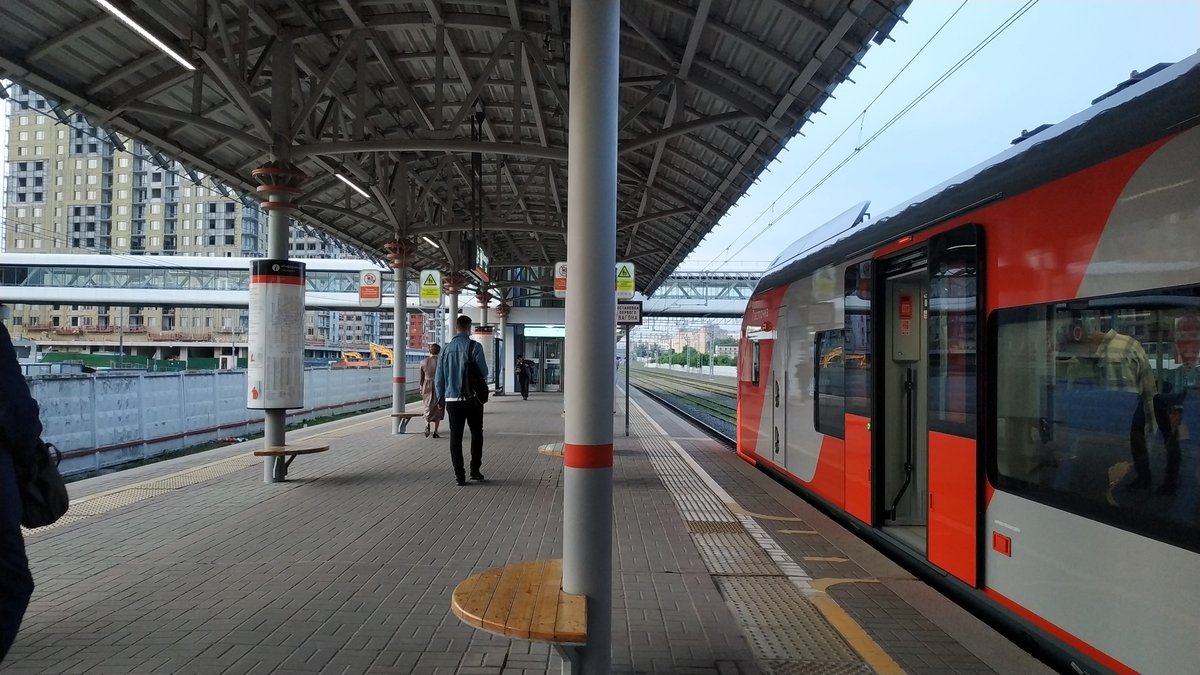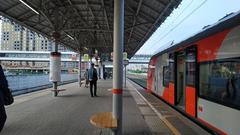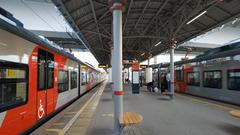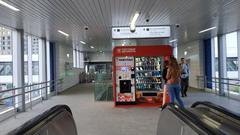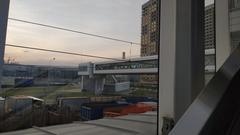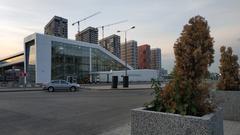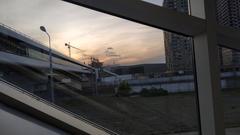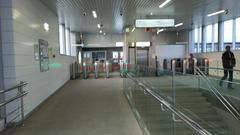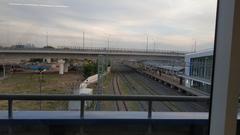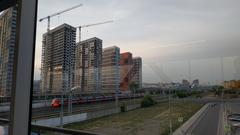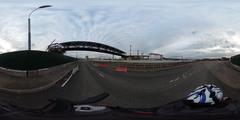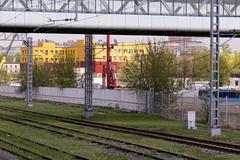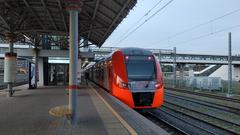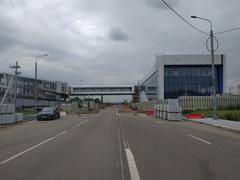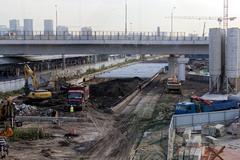ZIL Moscow Visiting Hours, Tickets, and Historical Significance Guide
Date: 14/06/2025
Introduction
Nestled in southeastern Moscow, the ZIL site stands as a powerful emblem of Russia’s Soviet industrial heritage and its ambitious journey toward urban transformation. Originally built in 1916 as Zavod imeni Likhachova (ZIL), this sprawling 400-hectare industrial complex became synonymous with Soviet automotive innovation, producing legendary trucks, buses, and hand-built limousines for state leaders. Today, ZIL is undergoing dynamic redevelopment, with historic preservation efforts coexisting alongside modern urban living and cultural innovation. The revitalized district—now known as Zilart—has become a must-visit destination for history enthusiasts, architecture aficionados, and curious travelers seeking a unique Moscow experience (The Moscow Times, GlobalSecurity.org, ZIL Cultural Center Official Website).
This comprehensive guide provides everything you need to know for your visit. Discover ZIL’s historical and cultural significance, practical visitor information, transportation options, accessibility, and highlights of the district’s landmarks. From the iconic ZIL Palace of Culture—a Soviet constructivist masterpiece still bustling with creative activity—to the revitalized parks and upcoming museums along the Moskva River, ZIL offers a compelling blend of past and present.
For seamless navigation and up-to-date event information, digital tools like the Audiala app provide curated tours and maps. Nearby Moscow attractions such as Kolomenskoye Estate, Gorky Park, and the Tretyakov Gallery further enrich your itinerary, allowing for a deep dive into the city’s rich heritage.
Table of Contents
- Discover ZIL: A Must-Visit Historical and Industrial Landmark in Moscow
- Brief History of ZIL
- Visitor Information: Location, Hours, and Accessibility
- How to Visit ZIL: Transport and Tours
- Points of Interest and Photo Opportunities
- Nearby Attractions in Moscow
- Frequently Asked Questions (FAQ)
- Preserving ZIL’s Legacy Amid Modernization
- Cultural and Architectural Significance
- Visiting the ZIL Site: Practical Information
- ZIL Cultural Center: Visiting Hours, Tickets, and Historical Site Guide
- Zil Moscow: Practical Tips for an Unforgettable Experience
- Summary and Key Points
- Sources and Official Links
Discover ZIL: A Must-Visit Historical and Industrial Landmark in Moscow
ZIL represents a remarkable intersection of Soviet history, industrial might, and contemporary urban renewal. Its vast territory, once teeming with factory workers and assembly lines, has transformed into a vibrant district that honors its past while embracing innovation and creativity.
Brief History of ZIL
Founded in 1916, ZIL was named after Ivan Likhachov and quickly became a centerpiece of Soviet automotive and heavy machinery production. The plant reached its zenith during the Soviet era, employing up to 100,000 workers and producing not only utilitarian trucks and buses but also the luxurious ZIL limousines reserved for high-ranking officials. After the Soviet Union’s collapse, the factory experienced significant decline, ceasing most operations by 2013. Today, redevelopment efforts have transformed the area into Zilart, an urban district blending preserved industrial architecture and new public spaces (GlobalSecurity.org, Harvard Omeka).
Visitor Information: Location, Hours, and Accessibility
- Location: 1 Varshavskoye Highway and 42 Avtozavodskaya Street, Moscow, Russia, along the Moskva River embankment.
- Opening Hours:
- Zilart district and public spaces: 8:00 AM – 10:00 PM, daily.
- ZIL Cultural Center: 10:00 AM – 8:00 PM, Tuesday to Sunday (closed Mondays).
- Tickets:
- Public areas: Free entry.
- ZIL Cultural Center: Most events are free; special exhibitions or performances may require tickets (see official website for details).
- Accessibility: Wheelchair-accessible walkways and ramps are available throughout most new developments; check specific venues for full accessibility details.
How to Visit ZIL: Transport and Tours
- Metro:
- Avtozavodskaya (Line 2, Dark Green) is closest to the ZIL Cultural Center.
- ZIL Station on the Moscow Central Circle (Line 14) also offers direct access.
- Tulskaya (Circle Line) serves the northern part of the district.
- Buses and Trams: Multiple lines serve ZIL and surrounding neighborhoods.
- Guided Tours: Seasonal walking tours are available through local operators and the ZIL Cultural Center, focusing on industrial heritage and architectural highlights. Advance booking is recommended.
Points of Interest and Photo Opportunities
- ZIL Palace of Culture: A Soviet constructivist landmark, hosting concerts, exhibitions, and community events.
- Preserved Factory Buildings: Historic Soviet industrial architecture provides striking photo backdrops.
- Zilart Urban Park: Green spaces along the Moskva River with scenic views and walking paths.
- Upcoming Hermitage Moscow: A future cultural hub, set to offer world-class exhibitions.
- Rooftop Observatory: Offers panoramic views of the Moscow skyline (open seasonally).
Nearby Attractions in Moscow
- Kolomenskoye Estate: Historic royal estate with museums and parks, just a short distance from ZIL.
- Tretyakov Gallery: Russia’s premier art museum, easily reached by metro.
- Gorky Park: Popular for recreation and cultural events, accessible from Zilart.
Frequently Asked Questions (FAQ)
Is ZIL open to the public?
Yes, the Zilart district and Cultural Center are open to visitors. The original factory buildings are mostly closed, but many public spaces and cultural venues are accessible.
What are ZIL’s visiting hours?
Public areas: 8:00 AM – 10:00 PM.
ZIL Cultural Center: 10:00 AM – 8:00 PM, Tuesday to Sunday (closed Mondays).
Are guided tours available?
Yes, check with the ZIL Cultural Center or local tour operators for schedules.
How do I get to ZIL by public transport?
Take Metro Line 2 to Avtozavodskaya, or Line 14 to ZIL Station.
Is the area wheelchair accessible?
Most new developments and public spaces are accessible, though some older buildings may have limited facilities.
Preserving ZIL’s Legacy Amid Modernization
ZIL’s redevelopment carefully balances honoring its storied industrial past with the needs of a modern urban community. Ongoing preservation efforts include adaptive reuse of historic buildings, heritage markers, and museum exhibitions. The district stands as a living memory of Moscow’s industrial and social history while embracing contemporary culture and innovation.
Cultural and Architectural Significance
Soviet Industrial Design
ZIL’s original structures featured expansive assembly halls, administrative buildings in Stalinist neoclassical style, and the iconic ZIL Palace of Culture—a masterpiece of constructivist architecture designed by the Vesnin brothers in the 1930s (Unique Cars and Parts). The complex also included worker housing, sports fields, and libraries, forming a self-contained urban ecosystem.
ZIL Limousines
The hand-built ZIL limousines, such as the ZIL-41047, became enduring symbols of Soviet power, featuring in parades, films, and state events (Bring a Trailer).
Contemporary Urban Redevelopment
The Zilart project introduces modern residential quarters, tech parks, schools, and green spaces, while retaining architectural elements of the original factory. The district is now a model of sustainable, pedestrian-friendly urban planning.
ZIL Cultural Center: Visiting Hours, Tickets, and Historical Site Guide
Architectural Highlights
The ZIL Cultural Center is a striking example of Soviet constructivist architecture, with vast glazed surfaces and bold geometric forms. Its design—by the Vesnin brothers—embodies the Soviet vision of communal cultural spaces.
Cultural and Educational Activities
The center hosts daily performances, art exhibitions, workshops, and creative laboratories for all ages. The historic S.L. Stein Drama Theater Circle (est. 1937) provides youth theater programs and has nurtured generations of Russian actors.
Family-Friendly Attractions
Children’s programs, art classes, and science workshops are available year-round. The indoor winter garden offers a peaceful retreat, while the rooftop observatory provides panoramic city views during warmer months.
Festivals and Events
Open-air concerts, art fairs, and music festivals are held seasonally, attracting locals and tourists alike.
Visitor Information
- Hours: 10:00 AM – 8:00 PM, Tuesday to Sunday; closed Mondays.
- Tickets: Many events are free; tickets for special performances or exhibitions can be purchased online or at the box office. Discounts available for students and seniors.
- Location: 42 Avtozavodskaya Street, near Avtozavodskaya metro station.
- Accessibility: Elevators, ramps, and accessible entrances; staff assistance available.
- Photography: Permitted in public spaces; restrictions may apply during performances.
- Guided Tours: Available by appointment.
Zil Moscow: Practical Tips for an Unforgettable Experience
- Transport: Use the efficient Moscow Metro (Troika card recommended); avoid car travel during rush hour (Owlovertheworld).
- Language: Basic Russian is helpful; Yandex Translate app recommended.
- Safety: Low crime; stay vigilant in crowded areas and carry your passport.
- Health: Bring travel insurance; pharmacies are widely available (Hikersbay).
- Money: Ruble is the only accepted currency; bring cash or obtain a local card due to possible restrictions on foreign cards.
- Best Time to Visit: May–September for pleasant weather; winters are cold but atmospheric.
- Local Etiquette: Dress modestly, tip 10–12%, and respect local customs.
- Food & Shopping: Wide variety of cafes and boutiques in repurposed industrial spaces.
- Green Spaces: Enjoy river embankment parks, playgrounds, and cycling paths.
Summary and Key Points
ZIL’s transformation from a legendary Soviet industrial site to a vibrant urban district offers visitors a unique opportunity to experience the intersection of history, architecture, and modern city life. The district’s preserved Soviet-era buildings, innovative cultural venues, and accessible green spaces make it a standout destination in Moscow. Well-connected by public transport and enriched with a year-round calendar of events, ZIL embodies Moscow’s successful integration of historical legacy and urban renewal. Use resources like the Audiala app for real-time updates and curated guides to make the most of your visit (Harvard Omeka, Unique Cars and Parts, Official ZIL Cultural Center Website).
Sources and Official Links
- The Moscow Times: 99 Years of ZIL
- GlobalSecurity.org: ZIL Overview
- Harvard Omeka: Post-Industrial Sites - ZIL
- Unique Cars and Parts: ZIS/ZIL Heritage
- ZIL Cultural Center Official Website
- Bring a Trailer: The Last Russian Limousine - ZIL
- Owlovertheworld: Moscow Travel Tips
- Hikersbay: Moscow Tourist Information
Images & Multimedia: Include high-quality images of the Zilart district, ZIL Cultural Center, winter garden, rooftop views, and the Moskva River embankment. Use alt tags such as “ZIL Industrial Complex Entrance in Moscow” and “Winter garden inside ZIL Cultural Center.” Embed an interactive map showing ZIL’s location near Avtozavodskaya metro station. If available, link to a virtual tour of the ZIL Cultural Center.
